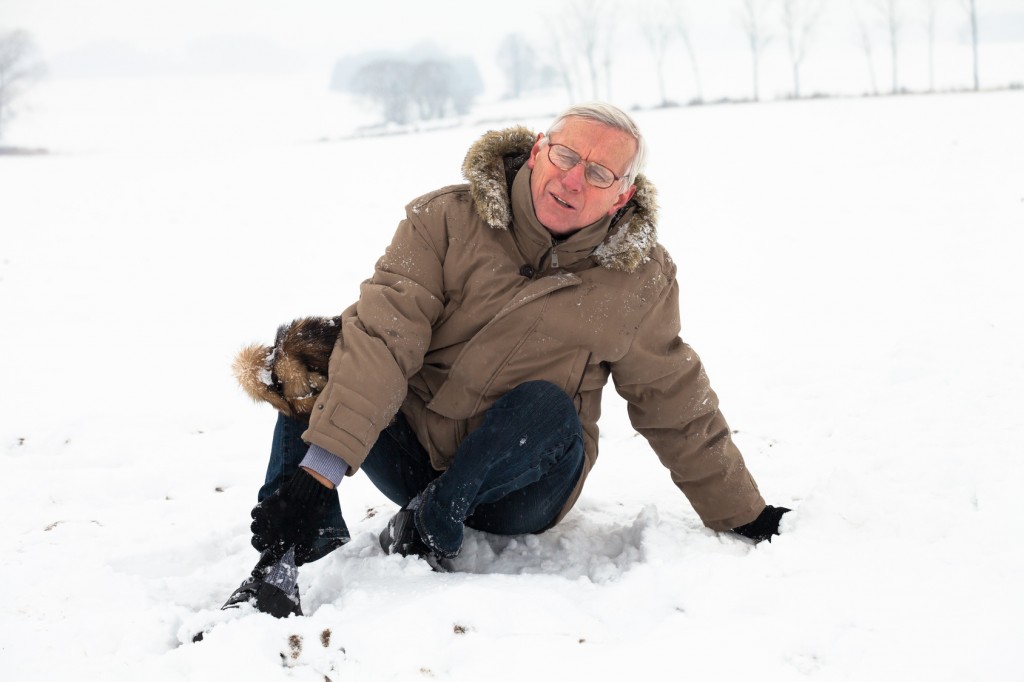 As we age our muscles weaken, our bones lose their density, and our balance decreases. And when you combine all three of those things happening around the same age you are increasing your risk of serious injuries from falling!
As we age our muscles weaken, our bones lose their density, and our balance decreases. And when you combine all three of those things happening around the same age you are increasing your risk of serious injuries from falling!
But it’s what happens when you fall that is the more serious threat. Broken hips, torn muscles in your shoulders, knee sprains, head injuries, and contusions are all many times more serious as we get older. A broken hip or tears in muscles could lead to surgeries and limited ability to even do the simplest tasks around the house. Some think that it is just a part of aging and there is nothing you can do about it. Others are in denial that they even have balance issues and blame it on the piece of loose rug or the snow.
Studies have shown that you can improve balance and strength at any age! So how do you improve your balance? You have to do exercises that challenge it. Below are a series of exercises you can do at home. But first…. the safety tips.
Staying safe when improving your balance
- Have a stable surface nearby. When performing balance exercises you need to have something strong and stable that you can easily grab on to quickly if you begin to fall…. and you will begin to fall several times if doing the balance exercises correctly. Some of the safer things to use is a structural pole or standing in a doorway, but you can also use the assistance of someone else or a chair.
- Do not over challenge yourself. This means you should not actually fall when doing these balance exercises…. ever. You should tip but always use one of the above mentioned things to catch yourself. But you also don’t want to be doing balance exercises that challenge your balance so much you cannot perform them. Find one that is challenging, meaning you cannot do it perfectly every time, but also not so difficult you can never do it.
- Consult with your doctor and/or physiotherapist. You doctor or physiotherapist will know your limitations best. They will also be able to let you know what balance exercises will help you the most, or which ones to avoid. If you do not have a physiotherapist you can make an appointment or stop by one of our clinics for a balance evaluation. We will then provide a personalized program tailored to your specific needs.
Common balance exercises
Simply stand on one leg. Hold this for 5-30 seconds depending on your balance ability and fatigue. Repeat this exercise 5-10 times. If it is too difficult you can hold on to something with as little support as you can. For example, using two fingers on the pole or doorway for a little added stability. If you hold on with too much support you are not going to reap any benefits as you are not challenging yourself.
2. Tandem stance
Stand with one foot in front of the other. Your heel of the front foot should touch the toes of the one behind it. You can hold this for 5-30 seconds and you should repeat with the opposite leg in front. Perform this 5-10 times on each side. This is best performed in a doorway as you will often tip from side to side. You can even walk heel-to-toe down a hallway, slowly, to increase the challenge.
3. Head turns while walking
This is best performed in a hallway. While walking slowly down your hallway in a straight line turn your head as far as you can to the right and then left. You can start by turning your head but looking forward, and then advance to looking over your shoulder as you turn your head.
4. Standing on an unstable surface
Place a pillow or chair cushion on the floor next to your stable surface and begin with your feet apart. If this is not challenging then move your feet closer until you feel your body swaying or your balance is challenged. Stand there for 10-30 seconds and then rest by moving your feet apart or stepping off the unstable surface. Repeat this 10 times.
Those are just a few of potentially hundreds of various exercises you can do to improve your balance. If your balance is a serious issue or you have noticed an increase in number of falls than we suggest you seek the guidance of a physiotherapist. We are trained at discovering why your balance is limited and can develop an individualized program to help improve it. If you have any questions or are unsure about whether you would benefit from a balance program, give us a call today!

